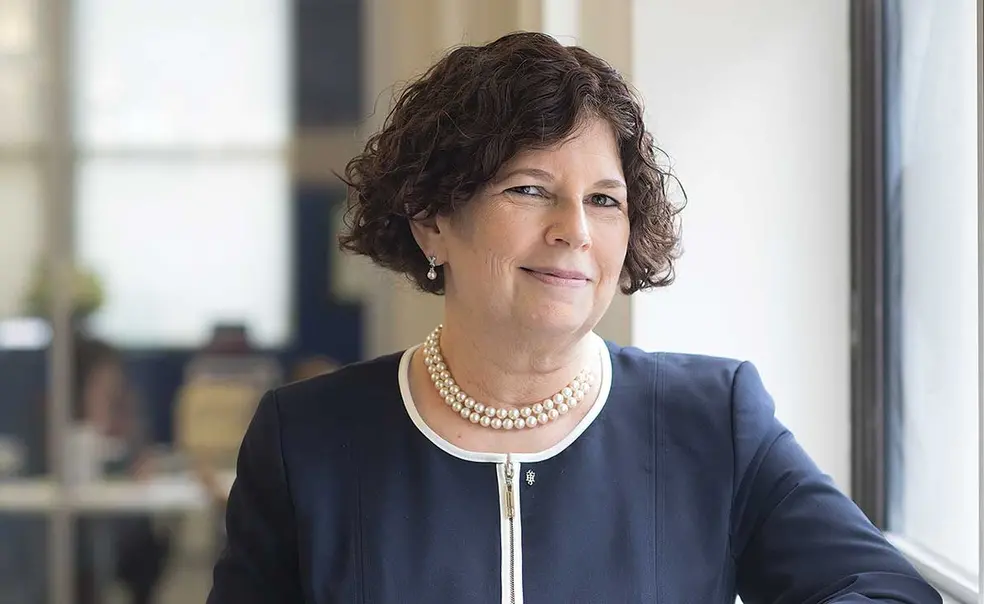Amy L. Friedman ’79: Helping to Deliver the Gift of A Lifetime
When a man dying of ALS wanted to donate his organs but ran into red tape at the hospital, Amy L. Friedman ’79 made sure his dying wish was granted. When a transplant surgeon needed a new liver for a patient on the operating table, Friedman made it happen — and helped save the patient’s life.
“Being able to take something that doesn’t seem like it’s going to happen and turning it into reality — it’s something I try to do a lot. And it’s a privilege,” says Friedman, a veteran transplant surgeon who now serves as the chief medical director for LiveOnNY, the nonprofit that oversees organ donations in the greater New York area.
Growing up in the 1970s in Brooklyn, Friedman was a voracious reader who skipped two grades and arrived at Princeton at 16. While she may have felt unprepared for the college social scene, Friedman was crystal clear in her career goal: to practice medicine.
Friedman grew up wanting to emulate her father, a pioneering nephrologist who helped build the first federally funded dialysis center in the country. Choosing to become a transplant surgeon was personal: Both her mother and her uncle have been kidney-transplant recipients. She went on to practice transplant surgery for 25 years while serving on the faculty at the medical colleges of the University of Pennsylvania, Yale University, and SUNY Upstate.
There are 112,000 people in the United States waiting for organ transplants, says Amy Friedman ’79. Kidneys are the most sought-after.
In 2013, Friedman was living in Syracuse, N.Y., working as a professor of surgery at SUNY Upstate and serving as the medical director of the Finger Lakes Donor Recovery Network.
When she learned that the Manhattan-based LiveOnNY was searching for a chief medical officer, she jumped at the opportunity for a new challenge. She moved back to her hometown and joined the nonprofit that year.
There are 112,000 people in the United States waiting for organ transplants, says Friedman. Kidneys are the most sought-after, with more than 94,000 patients in need; livers are second, with roughly 13,000 waiting; hearts and lungs follow.
About 20 people on these lists die each day while donors remain elusive. This gap is particularly significant in New York, which is home to approximately 10 percent of those waiting in the U.S. for organs but has a lower donor registration rate than the national average. (Transplant organs typically go to recipients in the state in which they were recovered.)
Friedman works throughout the metro area’s 100 hospitals and transplant centers to educate medical professionals and citizens on the severity of the shortage, the process of donation, and the significant impact donation can have: A single donor can save up to eight lives and aid up to 50 more through tissues like blood cells, bone, and corneas.
“That’s what this is all about: getting people to understand that they really can save lives,” she says.
Friedman explains that most transplant organs come from deceased donors, and they can be recovered only from patients who have died in the hospital from cardiac death or brain death. Unfortunately, there is a lot of misinformation around donation. According to a 2009 survey by Donate Life America, 57 percent of respondents questioned whether a person can recover from brain death. The same survey found that half of respondents were concerned that doctors do not have incentives to save organ donors, and 44 percent erroneously believed registering might mean their organs would be sold into a black market.
Even in PAW’s class notes, Friedman sees many organ recipients. She hopes her story will inspire more alumni to donate.
Friedman says about a quarter to a third of people she’s encountered have personal connections to organ donation and transplantation. Even in PAW’s class notes, she sees many organ recipients mentioned. She hopes to inspire more alumni to donate by registering on both their state registries (you can find your state’s at organdonor.gov) and the national registry, DonateLife.net.
Thanks in part to LiveOnNY’s initiatives, which include grassroots social-media campaigns, educational lectures, and patient advocacy, 2019 saw a record 938 organs transplanted from 341 donors, and 10 percent more New Yorkers signed up on the Donate Life New York State registry, bringing the total to more than 6 million — up from just 4 million five years ago.
“We understand that people have questions and doubts, and we do not expect or demand that everybody agrees. We just want people to make an educated choice,” she says. “And then, they should be sure to tell their families their wishes.”












No responses yet